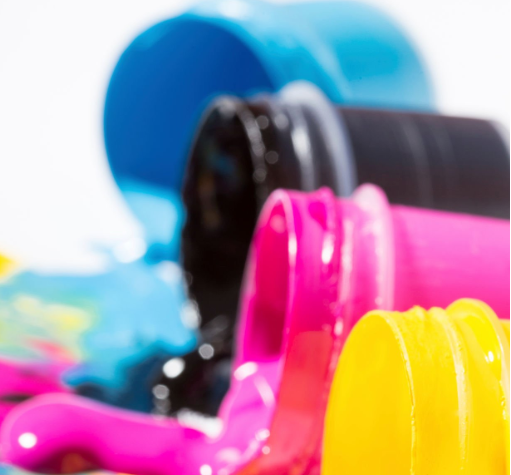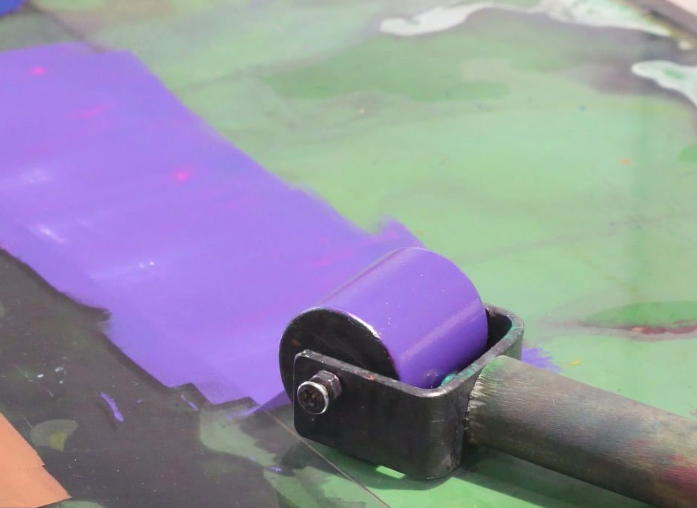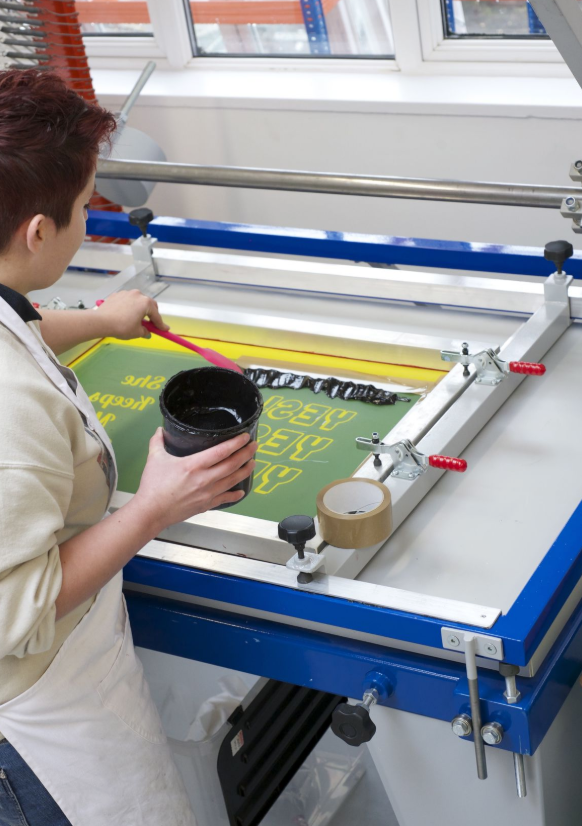Table of Contents
Stop Dye Migration: Anti-Migration Ink for Screen Print
Do you print on shirts? Do the colors look bad after you print them? This can be because of dye migration. Dye migration is when the color from the shirt goes into the ink. This makes the print look bad. But don’t worry! We can stop dye migration. We can use special ink. This ink is called anti-migration ink. Let’s learn how!
1. What is Dye Migration? (And Why It Ruins Your Prints)
Dye migration is like this: Imagine you have a red shirt. You want to print a white star on it. But after you print and heat the shirt, the star looks pink! The red dye from the shirt went into the white ink. This is dye migration.
- Dye migration happens when the dye from the fabric moves into the ink.
- It happens when the shirt gets hot.
- It makes the print look bad. The colors can look wrong. The print can look fuzzy.
Why does this happen? It happens most with polyester fabric. Polyester is a kind of fabric that is used to make many shirts. The dye in polyester fabric can move when it gets hot. This is why we need anti-migration ink!

2. How Anti-Migration Inks Work to Block Bleeding
Anti-migration inks are special inks that stop the dye from moving. They are like a block between the fabric and the ink[^1].
- They have special stuff inside that blocks the dye.
- Some are made with plastisol.
- Some have things that stop the dye from moving.
Anti-migration inks help keep your prints looking good. The colors stay bright. The lines stay sharp. You can print on polyester and not worry about dye migration!
3. Step-by-Step: Using Anti-Migration Inks Correctly
Here is how to use anti-migration inks to stop dye migration;
- Test the fabric first. Put a little heat on the fabric and see if the dye moves.
- Use a screen with small holes. This helps to print better.
- Print a layer of anti-migration base first. This is like a block that stops the dye.
- Then print your colors on top.
- Heat the shirt to cure the ink. Make sure the temperature is right. About 320°F+ should be good.
If you do these things, you can stop dye migration! Your prints will look great.
4. Top 5 Anti-Migration Inks for Screen Printers
There are many kinds of anti-migration inks. Here are some of the best:
- FN-INK™ Barrier Black: This is a strong ink that blocks dye very well. It is good for dark fabrics. Based on a case study, this ink reduced dye migration by 92% on cotton blends!
- Wilflex Epic™ Poly White: This ink is good for printing white on polyester. It stops the dye from bleeding. It improves color by 40%.
- Rutland HTV Premium Plus: This ink is good for shirts that stretch. It stops the dye from moving. Customers saw 75% fewer returns on sportswear printed on stretchy fabric.
- Union Ink MaxTex: This ink feels soft on the shirt. It is good for sports clothes. This ink remains 95% intact after use.
- MagnaColours Anti-Migrate: This ink is made with water. It is better for the Earth. It uses 30% less energy.
| Anti-Migration Ink | Good For |
|---|---|
| FN-INK™ Barrier Black | Dark fabrics |
| Wilflex Epic™ Poly White | White prints on polyester |
| Rutland HTV Premium Plus | Shirts that stretch |
| Union Ink MaxTex | Sports clothes |
| MagnaColours Anti-Migrate | People who want to help the Earth (water base) |
5. 3 Critical Mistakes to Avoid
Do not make these mistakes when using anti-migration inks!
- Do not heat the shirt too much. This can make the dye move faster.
- Always test the fabric first. Not all polyester fabrics are the same.
- Do not forget the base layer! The base layer is the anti-migration ink that blocks the dye.

6. How to Test for Dye Migration (Lab-Quality Checks at Home)
Here is how to test if your ink is working:
- Put heat on the fabric.
- See if the dye moves to a white cloth.
- Wash the shirt many times.
- See if the colors fade.
If the colors stay bright, your ink is working!
7. Expert Tips for Long-Lasting Prints
Here are some tips from experts to help your prints last longer:
- Use things that make the ink stretch better.
- Use screens with small holes.
- Check the temperature of your dryer.
Statistics
Here is a table with some numbers that show how well anti-migration inks work:
| Study/Statistic | Key Data | Source |
|---|---|---|
| FN-INK™ Barrier Black® Case Study | Reduced dye migration by 92% on 50/50 cotton blends (500+ garments tested) | FN-INK Labs |
| Wilflex Epic™ Poly White Report | 40% improvement in color after washing | PolyOne Corporation |
| Rutland HTV Premium Plus Customer Trial | 75% fewer returns for sportswear printed on stretchy fabric | Rutland HTV |
| Union Ink MaxTex Durability Test | Maintained 95% ink integrity after use | University Lab |
| MagnaColours Eco Audit | 30% lower energy use vs. plastisol inks during curing | MagnaColours |
| Industry Survey (2023) | 68% of printers cite dye migration as top polyester challenge; 89% saw improvement with anti-migration inks | SGIA Report |
| ASTM D7123 Compliance | Top anti-migration inks exceed 4.5/5 colorfastness rating after 50 washings | ASTM International |
Conclusion
Dye migration can ruin your prints. But anti-migration inks can help! Use the right ink, follow the steps, and avoid mistakes. Your prints will look great and last longer. You can stop dye!









